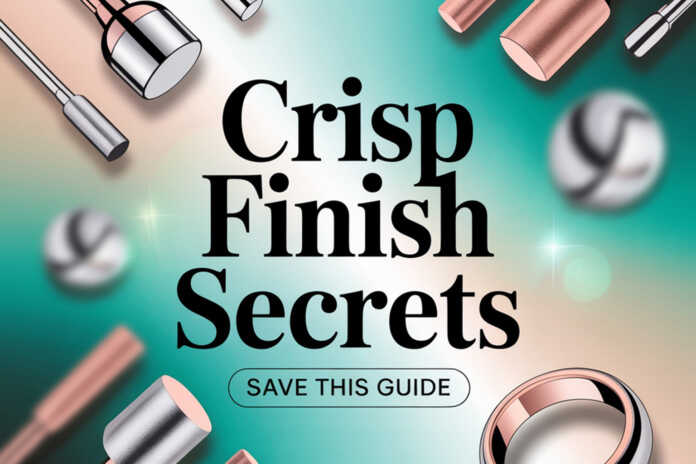Why it’s hard: True mirror with sharp architecture is a sequence problem, not a compound problem. Platinum cuts differently than gold; tumbling rounds edges; “orange-peel” and drag lines appear fast; satin-to-mirror transitions telegraph every slip.
What “good” looks like: Flats that are actually flat, corners that stay corners, no ripples, no compound contamination, and intentional contrast finishes that read clean at 10×.
Bench checklist:
• Prep on hard backers: files → stones → micro-finishing films (e.g., 400/600/800/1200/3000 grit) on a flat, rigid surface.
• Protect geometry: tape or shellac near edges; use split laps/hard felt to keep planes true.
• Metal discipline: dedicated abrasives/compounds per metal; never cross-contaminate (platinum has its own system).
• Buff control: stitched for cut, loose for final colour; minimal pressure; fresh wheels dressed square.
• Directional passes: straight, single direction per grit; rotate 90° between grits to chase lines.
• Clean between steps: ultrasonic + steam; new buffs for final.
• Sequence mixed finishes: polish first, then add satin/brush; mask aggressively so the contrast reads at 10×.
• No tumbling for sharp architecture or mixed-metal work—use targeted hand finishing instead.
• Fix “orange-peel” at the source: correct casting/wax/blast issues or re-surface before polish; don’t try to buff it out.
• QA: raking light + loupe; edge gauge and reflection line test before moving grits.
Pitfalls → pro fixes:
• Rounding detail with the wrong media → Skip tumbling; step abrasives methodically; finish platinum with non-contaminating abrasives.
• “Orange-peel” after casting or blasting → Diagnose wax/blast/heat; re-surface flat before any compound.
• Over-polishing → Use micro-finishing films and disciplined grit progressions; dedicated buffs per metal.
Save this for the bench and share with a teammate who obsesses over perfect edges.
![]()








